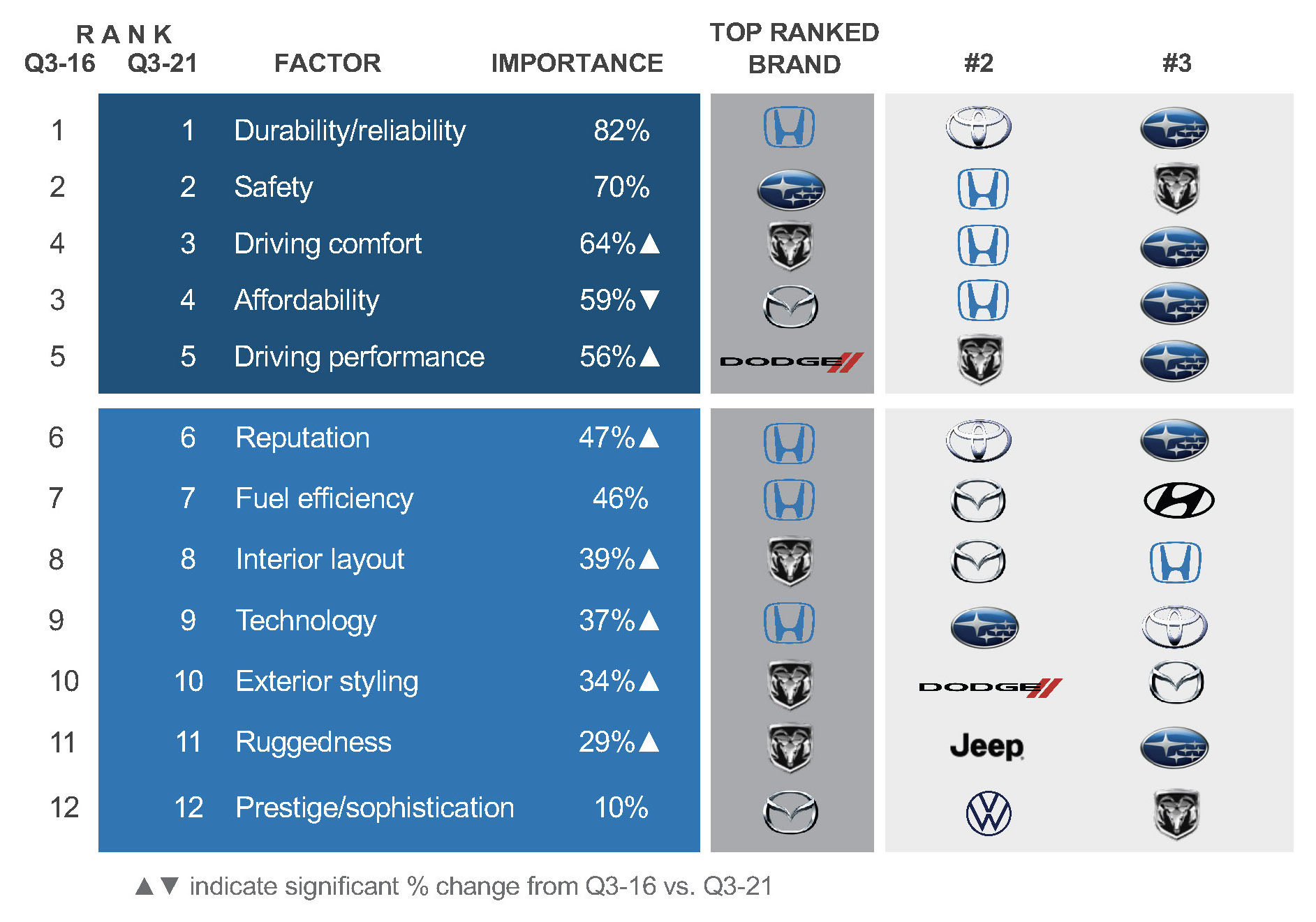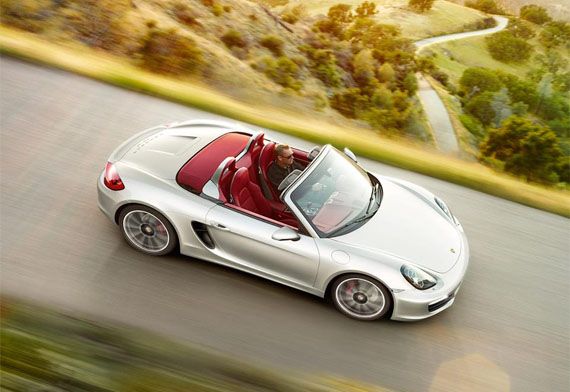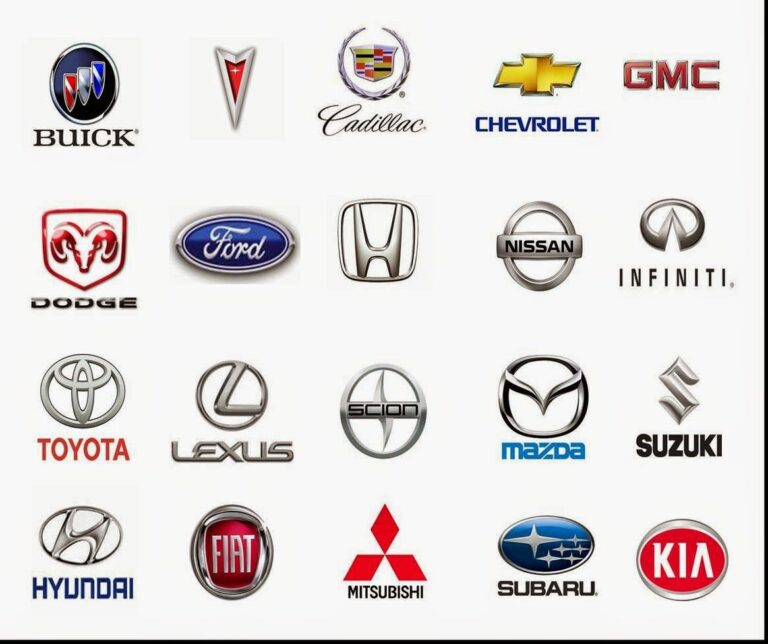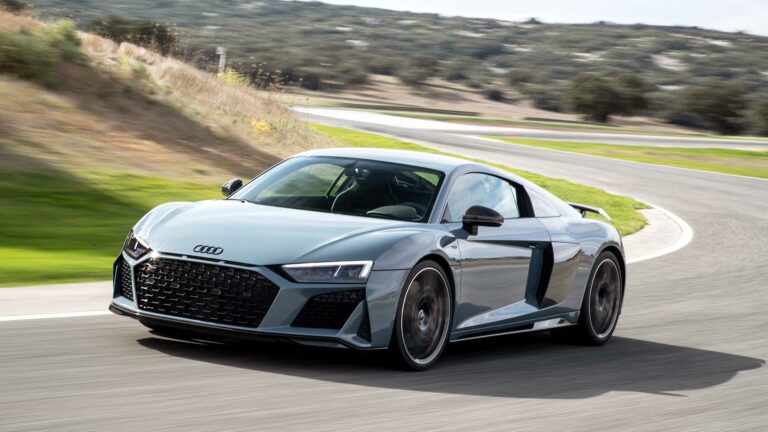Non-Luxury Car Brands: The Backbone of Everyday Mobility
Non-Luxury Car Brands: The Backbone of Everyday Mobility cars.truckstrend.com
In the vast and diverse automotive landscape, where gleaming chrome and exorbitant price tags often capture headlines, there exists a crucial, yet frequently understated, segment: non-luxury car brands. These are the workhorses of the road, the pragmatic choice for millions, and the foundational pillars of global transportation. Unlike their luxury counterparts that prioritize prestige, cutting-edge, often proprietary technology, and opulent interiors, non-luxury brands focus on delivering accessible, reliable, practical, and value-driven vehicles designed for the everyday needs of the general public.
Understanding non-luxury car brands isn’t just about identifying affordable vehicles; it’s about appreciating the engineering prowess, efficiency, and widespread accessibility that defines mass-market mobility. These brands are the unsung heroes providing reliable transportation, fostering economic activity, and ensuring that quality vehicles are within reach for a broad spectrum of consumers worldwide.
Non-Luxury Car Brands: The Backbone of Everyday Mobility
Defining the Non-Luxury Landscape: Practicality Over Prestige
At its core, a non-luxury car brand distinguishes itself by its commitment to value, utility, and widespread appeal. While luxury brands like Mercedes-Benz, BMW, Audi, and Lexus aim for exclusivity, peak performance, and premium materials, non-luxury brands such as Toyota, Honda, Ford, Chevrolet, Hyundai, Kia, Nissan, and Volkswagen prioritize:
- Affordability: Generally lower purchase prices, making them accessible to a wider demographic.
- Reliability and Durability: Built for longevity and sustained performance under everyday driving conditions, often with simpler, proven powertrains.
- Practicality: Focus on functional design, ample cargo space, comfortable seating for daily commutes, and family needs.
- Fuel Efficiency: Many models are designed to maximize miles per gallon, reducing running costs.
- Lower Total Cost of Ownership (TCO): Beyond the initial price, non-luxury vehicles typically incur lower costs for insurance, maintenance, and repairs due to more affordable parts and widespread service networks.
- Mass-Market Appeal: Their designs and features cater to a broad audience, rather than a niche, affluent segment.

This isn’t to say non-luxury vehicles lack sophistication. Modern non-luxury cars often incorporate advanced safety features, robust infotainment systems, and comfortable interiors, but they do so with an eye on cost-effectiveness and broad utility.
The Pillars of Practicality: Why Choose Non-Luxury?
The decision to opt for a non-luxury vehicle is often rooted in sound financial and practical reasoning. The benefits extend far beyond the initial purchase price:

- Unbeatable Affordability: The most immediate advantage is the lower barrier to entry. This translates to lower monthly payments for financing or leasing, and often lower insurance premiums.
- Exceptional Reliability and Longevity: Brands like Toyota and Honda have built legendary reputations for vehicles that run for hundreds of thousands of miles with minimal issues. This reliability reduces unexpected repair costs and provides peace of mind.
- Economical Running Costs: Fuel efficiency is a strong selling point for many non-luxury models, especially with compact cars and hybrids. Furthermore, parts are generally more common and less expensive, and service networks are extensive, leading to lower maintenance costs over the vehicle’s lifespan.
- Strong Resale Value: While depreciation is inevitable, many popular non-luxury models, especially those with a reputation for reliability, hold their value remarkably well, making them a smart investment for future trade-ins or sales.
- Diverse Model Range: Non-luxury brands offer an astonishing array of vehicle types – from subcompact hatchbacks and family sedans to versatile SUVs, robust pickup trucks, and spacious minivans. This ensures that virtually every consumer need, lifestyle, and budget can be accommodated.
- Accessible Technology: What was once exclusive to luxury vehicles – features like adaptive cruise control, lane-keeping assist, Apple CarPlay/Android Auto, and sophisticated infotainment systems – are now standard or affordable options in many non-luxury models, democratizing advanced automotive technology.

Navigating the Non-Luxury Market: Key Considerations for Buyers
Choosing the right non-luxury car requires careful thought to ensure it aligns with your needs and budget.
- Define Your Budget Holistically: Don’t just consider the sticker price. Factor in financing costs, insurance premiums, estimated fuel consumption, and projected maintenance over five years.
- Assess Your Needs Accurately:
- Commute: Long highway drives or city stop-and-go? (Influences fuel economy and comfort features).
- Family Size: Will you need ample passenger space, car seat anchors, or cargo room for strollers/sports gear?
- Cargo Requirements: Do you frequently haul large items, or is a small trunk sufficient?
- Driving Conditions: Do you need all-wheel drive for snow/rough terrain, or is front-wheel drive adequate?
- Lifestyle: Active outdoor pursuits might call for an SUV, while urban living might favor a compact car.
- Prioritize Safety Features: Modern non-luxury cars come equipped with impressive safety suites. Look for features like automatic emergency braking, blind-spot monitoring, rear cross-traffic alert, and adaptive cruise control. Check NHTSA and IIHS safety ratings.
- Research Reliability and Resale Value: Consult independent automotive reliability surveys (e.g., J.D. Power, Consumer Reports) to gauge a brand’s and specific model’s track record. High reliability often correlates with strong resale value.
- Evaluate Fuel Economy: This is a crucial ongoing cost. Compare EPA ratings across models you’re considering. Don’t forget to look at hybrid or electric options.
- Test Drive Thoroughly: This is non-negotiable. Drive the car on various road types (city, highway, rough patches) to assess comfort, handling, acceleration, braking, and visibility. Pay attention to road noise, seat comfort, and ease of controls.
- Understand Trim Levels and Options: Non-luxury brands offer multiple trim levels, each with different features and price points. Avoid paying for features you don’t need, but don’t skimp on essentials.
- Consider Certified Pre-Owned (CPO): A CPO vehicle from a non-luxury brand can offer significant savings while still providing warranty coverage and rigorous inspections, bridging the gap between new and used cars.
Types and Categories of Non-Luxury Vehicles
The breadth of models available under non-luxury banners is immense, catering to virtually every niche:
- Sedans: The traditional car choice, ranging from economical compacts (Honda Civic, Toyota Corolla, Hyundai Elantra) to spacious mid-size (Toyota Camry, Honda Accord, Nissan Altima) and even some full-size options (Nissan Maxima, Chrysler 300).
- Hatchbacks: Offering enhanced cargo versatility with a compact footprint (Mazda 3 Hatchback, Toyota Corolla Hatchback, Honda Civic Hatchback).
- SUVs/Crossovers: The dominant segment today, available in compact (Toyota RAV4, Honda CR-V, Hyundai Tucson, Ford Escape), mid-size (Kia Telluride, Hyundai Palisade, Honda Pilot, Ford Explorer), and full-size (Chevrolet Tahoe, Ford Expedition) variations. They offer higher driving positions, ample cargo, and often AWD.
- Pickup Trucks: From mid-size workhorses (Toyota Tacoma, Ford Ranger, Chevrolet Colorado) to full-size titans (Ford F-150, Chevrolet Silverado, Ram 1500), these are essential for work and recreation.
- Minivans: The ultimate family haulers, providing unmatched passenger and cargo space, easy access, and family-friendly features (Honda Odyssey, Toyota Sienna, Chrysler Pacifica).
- Hybrids and Electric Vehicles (EVs): Non-luxury brands are at the forefront of electrification, offering efficient hybrids (Toyota Prius, Honda CR-V Hybrid) and increasingly affordable EVs (Chevrolet Bolt EV, Hyundai Kona Electric, Nissan Leaf, Kia EV6).
Challenges and Evolving Trends in the Non-Luxury Segment
While robust, the non-luxury market faces dynamic shifts:
- "Premiumization" of Non-Luxury: Many non-luxury brands are blurring lines with entry-level luxury, offering increasingly sophisticated interiors, advanced technology, and refined driving dynamics. This is great for consumers but can push prices up.
- Rising Costs: Supply chain disruptions, inflation, and the integration of more standard technology have led to significant price increases across the board, making truly "cheap" new cars harder to find.
- Electrification Transition: The push towards EVs presents both an opportunity and a challenge. While non-luxury brands are developing compelling EVs, the higher manufacturing costs and battery technology expenses often translate to higher sticker prices for consumers compared to equivalent gasoline models.
- Intense Competition: The market is crowded, not only with established players but also with emerging brands (especially from China and new EV startups) vying for market share.
- SUV Dominance: The overwhelming consumer preference for SUVs has led to the phasing out of many sedans and hatchbacks, reducing choice for those who prefer traditional car formats.
Practical Advice for Buying a Non-Luxury Car
- Research Extensively: Use online resources, consumer reviews, and expert opinions to narrow down your choices.
- Set a Realistic Budget: Include all costs – purchase, insurance, fuel, maintenance.
- Prioritize Your Non-Negotiables: Is safety paramount? Or fuel economy? Or cargo space?
- Don’t Overlook Used or CPO: A slightly used non-luxury car can offer incredible value for money.
- Negotiate Smartly: Be informed about the car’s true market value and don’t be afraid to walk away if the deal isn’t right.
- Get an Independent Inspection: For used cars, a pre-purchase inspection by a trusted mechanic is highly recommended.
Representative Starting MSRPs for Popular Non-Luxury Car Brands (Estimates)
Please note: Prices are highly variable based on model, trim level, optional features, region, incentives, and current market conditions. These figures represent typical starting MSRPs for base models and are subject to change. They do not include destination fees, taxes, or dealer markups.
| Brand | Country of Origin | Key Characteristics/Focus | Popular Models (Examples) | Typical Starting MSRP Range (USD, Est.) |
|---|---|---|---|---|
| Toyota | Japan | Reliability, Fuel Efficiency, High Resale Value, Hybrid Tech | Corolla, Camry, RAV4, Highlander, Tacoma, Prius | $22,000 – $38,000+ |
| Honda | Japan | Reliability, Driving Dynamics, Practicality, Engine Quality | Civic, Accord, CR-V, HR-V, Pilot, Odyssey | $23,000 – $40,000+ |
| Ford | USA | Trucks, SUVs, Performance, American Icon | F-150, Explorer, Escape, Bronco Sport, Maverick | $28,000 – $45,000+ |
| Chevrolet | USA | Trucks, SUVs, Value, Broad Range | Silverado 1500, Equinox, Traverse, Malibu, Trax | $25,000 – $40,000+ |
| Hyundai | South Korea | Value, Warranty, Modern Design, Tech Features | Elantra, Sonata, Kona, Tucson, Santa Fe, Ioniq 5 | $21,000 – $42,000+ |
| Kia | South Korea | Value, Warranty, Bold Design, Feature-Rich | Forte, K5, Seltos, Sportage, Telluride, EV6 | $20,000 – $45,000+ |
| Nissan | Japan | Value, Practicality, CVT Transmissions | Sentra, Altima, Rogue, Pathfinder, Frontier | $21,000 – $35,000+ |
| Subaru | Japan | All-Wheel Drive (Standard), Safety, Outdoor Lifestyle | Impreza, Legacy, Crosstrek, Forester, Outback, Ascent | $24,000 – $38,000+ |
| Mazda | Japan | Driving Dynamics, Premium Feel, Stylish Design | Mazda3, Mazda6 (discontinued in some markets), CX-5, CX-30, CX-50 | $23,000 – $35,000+ |
| Volkswagen | Germany | European Driving Dynamics, Refined Interiors, Turbo Engines | Jetta, Passat (discontinued in US), Tiguan, Atlas, Taos | $22,000 – $38,000+ |
Frequently Asked Questions (FAQ) about Non-Luxury Car Brands
Q: What’s the main difference between luxury and non-luxury car brands?
A: Luxury brands emphasize prestige, exclusive materials, cutting-edge proprietary technology, and superior performance, often at a much higher price point. Non-luxury brands focus on affordability, practicality, reliability, and value for the everyday consumer, making essential features accessible.
Q: Are non-luxury cars less safe than luxury cars?
A: Not necessarily. Modern non-luxury cars are built to rigorous safety standards and often include advanced driver-assistance systems (ADAS) as standard or affordable options. Many non-luxury models consistently earn top safety ratings from organizations like NHTSA and IIHS.
Q: Do non-luxury cars hold their value well?
A: Many popular non-luxury models, particularly those known for reliability (e.g., Toyota, Honda, Subaru), often hold their value exceptionally well due to high demand and their reputation for longevity. Resale value can sometimes be competitive with or even exceed that of some luxury brands.
Q: Can I get advanced technology and features in a non-luxury car?
A: Absolutely. Features like touchscreen infotainment with Apple CarPlay/Android Auto, advanced safety suites (automatic emergency braking, adaptive cruise control, lane-keeping assist), LED lighting, and even panoramic sunroofs are commonly available in higher trim levels of non-luxury vehicles.
Q: Which non-luxury brand is considered the most reliable?
A: While reliability can vary by model and year, Toyota and Honda consistently rank at or near the top in independent reliability surveys (e.g., J.D. Power, Consumer Reports). Subaru, Mazda, and Hyundai/Kia have also shown significant improvements and strong reliability in recent years.
Q: Are electric cars from non-luxury brands affordable?
A: "Affordable" is relative, but non-luxury brands are making significant strides in offering more accessible EVs. Models like the Chevrolet Bolt EV, Nissan Leaf, Hyundai Kona Electric, and Kia EV6 are generally less expensive than luxury EVs, especially when considering federal and state incentives.
Conclusion
Non-luxury car brands are far more than just "budget" options; they are the bedrock of the automotive world, offering an unparalleled blend of affordability, reliability, practicality, and innovation. They empower individuals and families with dependable transportation, driving economies and enabling daily life. As the industry evolves, these brands continue to adapt, integrating new technologies and sustainability initiatives while staying true to their core mission: providing quality, accessible mobility for the masses. For the discerning buyer seeking true value, peace of mind, and a vehicle that genuinely fits their life, the non-luxury segment remains the most sensible and rewarding choice.




